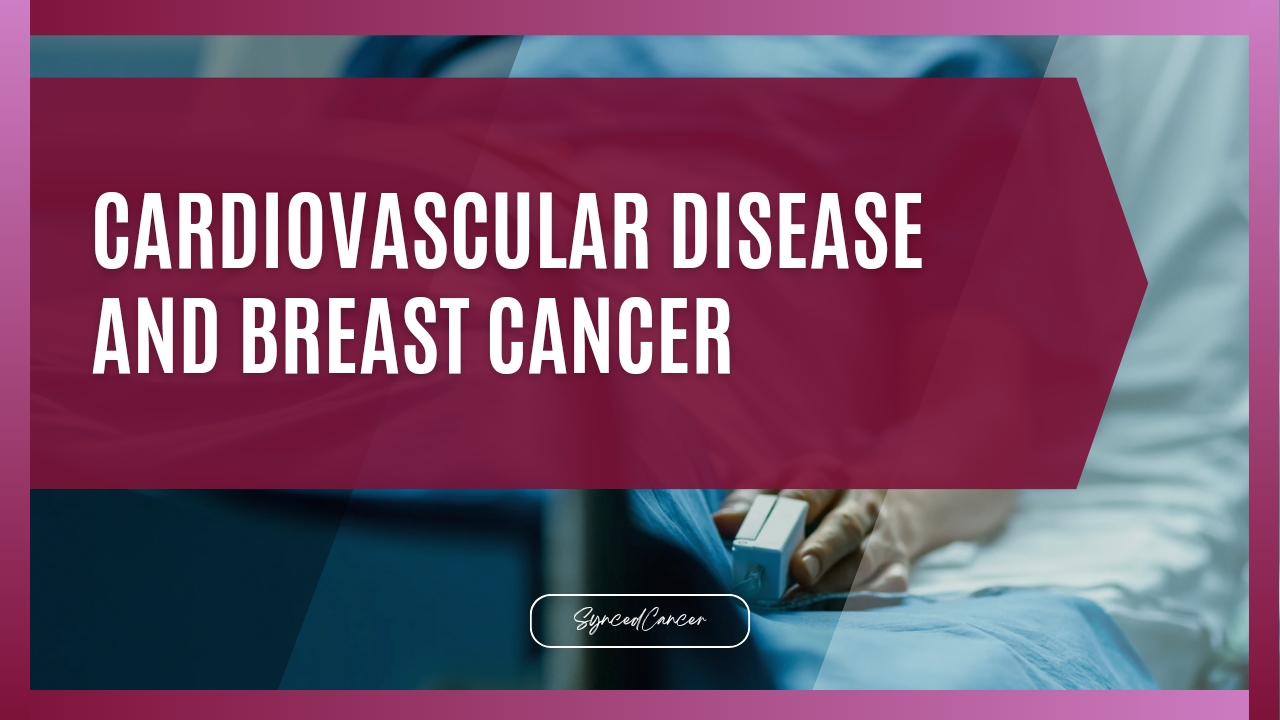Cardiovascular disease (CVD) and breast cancer are two of the most significant health challenges faced by women worldwide. Both conditions carry considerable morbidity and mortality rates, impacting millions of lives annually. While cardiovascular disease remains the leading cause of death globally, breast cancer is the most common cancer among women, making it a critical area of concern in public health. This blog post seeks to explore the intricate relationship between cardiovascular disease and breast cancer, examining their risk factors, pathophysiology, treatment modalities, and the implications of these two conditions coexisting in patients. The blog post will also delve into the importance of awareness, prevention, and the need for an integrated approach to managing these two major health concerns.
1. Understanding Cardiovascular Disease
Cardiovascular disease encompasses a range of disorders that affect the heart and blood vessels, including coronary artery disease, heart failure, arrhythmias, and stroke. The primary cause of CVD is atherosclerosis, a condition characterized by the buildup of plaque in the arterial walls, leading to reduced blood flow and, ultimately, ischemic events such as heart attacks and strokes.
1.1 Risk Factors for Cardiovascular Disease
The risk factors for CVD are well-documented and include both modifiable and non-modifiable factors. Non-modifiable risk factors include age, gender, and genetic predisposition. Women, particularly postmenopausal women, are at an increased risk of developing CVD due to the decline in estrogen levels, which is protective against atherosclerosis.
Modifiable risk factors include:
- Hypertension: High blood pressure is a significant risk factor for CVD as it places added strain on the heart and blood vessels.
- Hyperlipidemia: Elevated levels of cholesterol and triglycerides contribute to the formation of atherosclerotic plaques.
- Smoking: Tobacco use is a major contributor to CVD, damaging the blood vessels and promoting atherosclerosis.
- Diabetes: Diabetes increases the risk of CVD by accelerating the atherosclerotic process.
- Obesity: Excess body weight is associated with several risk factors, including hypertension, diabetes, and dyslipidemia.
- Sedentary Lifestyle: Lack of physical activity contributes to obesity and other risk factors for CVD.
- Diet: A diet high in saturated fats, trans fats, and sodium can lead to the development of CVD.
1.2 Pathophysiology of Cardiovascular Disease
The pathophysiology of CVD is complex and involves several mechanisms. Atherosclerosis, the primary cause of most CVDs, begins with endothelial injury, leading to the accumulation of lipids, inflammatory cells, and smooth muscle cells in the arterial wall. Over time, these components form a plaque, which can rupture and cause a thrombus (blood clot) to form. If the thrombus occludes a coronary artery, it can result in a myocardial infarction (heart attack). If it blocks a cerebral artery, it can lead to a stroke.
The progression of CVD is influenced by several factors, including inflammation, oxidative stress, and the balance between pro-thrombotic and anti-thrombotic factors in the blood. Chronic conditions such as hypertension and diabetes exacerbate the atherosclerotic process, making CVD a multifactorial disease that requires comprehensive management.

2. Understanding Breast Cancer
Breast cancer is a malignant tumor that originates in the cells of the breast. It is the most common cancer among women and the second leading cause of cancer-related deaths in women worldwide. Breast cancer can be classified into various subtypes based on the presence of hormone receptors (estrogen and progesterone receptors) and the human epidermal growth factor receptor 2 (HER2).
2.1 Risk Factors for Breast Cancer
Like CVD, breast cancer has both modifiable and non-modifiable risk factors. Non-modifiable risk factors include age, gender, family history, genetic mutations (e.g., BRCA1 and BRCA2), and reproductive history. Women with early menarche, late menopause, or no history of childbirth are at increased risk due to prolonged exposure to estrogen.
Modifiable risk factors for breast cancer include:
- Hormone Replacement Therapy (HRT): Prolonged use of HRT, particularly combined estrogen-progestin therapy, has been associated with an increased risk of breast cancer.
- Alcohol Consumption: Alcohol intake is a known risk factor for breast cancer, with the risk increasing with the amount of alcohol consumed.
- Obesity: Postmenopausal obesity is linked to an increased risk of breast cancer due to higher levels of circulating estrogen.
- Physical Inactivity: A sedentary lifestyle is associated with an increased risk of breast cancer.
- Diet: A diet high in saturated fats and low in fruits and vegetables may increase the risk of breast cancer.
2.2 Pathophysiology of Breast Cancer
Breast cancer arises from the uncontrolled growth of cells within the breast tissue. The pathogenesis of breast cancer involves genetic mutations, hormonal influences, and environmental factors. The most common types of breast cancer are ductal carcinoma in situ (DCIS) and invasive ductal carcinoma (IDC), which originate in the milk ducts, and invasive lobular carcinoma (ILC), which originates in the milk-producing lobules.
The progression of breast cancer involves multiple stages, from hyperplasia (increased cell growth) to carcinoma in situ (localized cancer) to invasive carcinoma (cancer that has spread beyond the initial site). The spread of breast cancer to other parts of the body, such as the bones, liver, lungs, and brain, is known as metastasis and is associated with a poorer prognosis.
3. The Intersection of Cardiovascular Disease and Breast Cancer
The coexistence of cardiovascular disease and breast cancer in the same patient presents a unique challenge for healthcare providers. While both conditions are serious, the treatment of one can influence the risk or progression of the other.
3.1 Impact of Breast Cancer Treatment on Cardiovascular Health
Breast cancer treatment, particularly chemotherapy, radiation therapy, and targeted therapies, can have adverse effects on cardiovascular health. For example:
- Chemotherapy: Certain chemotherapeutic agents, such as anthracyclines (e.g., doxorubicin), are known to cause cardiotoxicity, leading to heart failure, arrhythmias, and myocardial damage.
- Radiation Therapy: Radiation therapy to the chest area can damage the heart and blood vessels, increasing the risk of CVD. The risk is particularly high in patients who receive radiation to the left side of the chest, where the heart is located.
- Targeted Therapies: HER2-targeted therapies, such as trastuzumab, have been associated with an increased risk of heart failure, particularly when used in combination with anthracyclines.
The cardiotoxic effects of breast cancer treatment highlight the need for careful monitoring of cardiovascular health in breast cancer patients. This includes baseline cardiovascular assessment before treatment, regular monitoring during treatment, and long-term follow-up to detect any late-onset cardiovascular complications.
3.2 Shared Risk Factors and the Need for Integrated Care
Several risk factors are common to both cardiovascular disease and breast cancer, including obesity, physical inactivity, and poor diet. These shared risk factors suggest that an integrated approach to prevention and management could benefit patients at risk for both conditions.
For instance, lifestyle modifications such as weight loss, increased physical activity, and a healthy diet can reduce the risk of both CVD and breast cancer. Additionally, addressing modifiable risk factors such as smoking and alcohol consumption can have a dual benefit in preventing both diseases.
4. Prevention and Early Detection
Prevention and early detection are critical in reducing the burden of both cardiovascular disease and breast cancer. Public health initiatives should focus on raising awareness about the risk factors and encouraging lifestyle changes that can reduce the risk of both conditions.
4.1 Cardiovascular Disease Prevention
Primary prevention of CVD involves addressing modifiable risk factors through lifestyle changes and medical interventions. Key strategies include:
- Promoting a Heart-Healthy Diet: A diet rich in fruits, vegetables, whole grains, and lean proteins, while low in saturated fats, trans fats, and sodium, can reduce the risk of CVD.
- Encouraging Physical Activity: Regular physical activity, such as brisk walking, cycling, or swimming, can help maintain a healthy weight, lower blood pressure, and improve cardiovascular fitness.
- Smoking Cessation: Quitting smoking is one of the most effective ways to reduce the risk of CVD. Healthcare providers should offer support and resources to help patients quit smoking.
- Managing Blood Pressure and Cholesterol: Regular monitoring and control of blood pressure and cholesterol levels are essential in preventing CVD. Medications such as antihypertensives and statins may be prescribed to manage these risk factors.
4.2 Breast Cancer Prevention and Early Detection
Breast cancer prevention and early detection efforts focus on reducing risk factors and promoting regular screening. Key strategies include:
- Encouraging Regular Mammograms: Mammography is the most effective method for early detection of breast cancer. Women aged 40 and older should undergo regular mammograms, as recommended by their healthcare provider.
- Promoting Breast Self-Examinations: While not a substitute for mammography, breast self-examinations can help women become familiar with their breasts and detect any changes early.
- Genetic Counseling and Testing: Women with a family history of breast cancer or known genetic mutations (e.g., BRCA1, BRCA2) may benefit from genetic counseling and testing to assess their risk and consider preventive measures such as prophylactic surgery or chemoprevention.
- Lifestyle Modifications: Reducing alcohol consumption, maintaining a healthy weight, and engaging in regular physical activity can lower the risk of breast cancer.
Conclusion
Cardiovascular disease and breast cancer are two of the most significant health challenges facing women today. While they are distinct conditions, they share common risk factors, and their coexistence presents unique challenges for patients and healthcare providers alike. Understanding the interplay between CVD and breast cancer is essential in providing comprehensive care that addresses both conditions.
Prevention, early detection, and integrated care are key strategies in reducing the burden of these diseases. Public health initiatives should focus on raising awareness about the shared risk factors and promoting lifestyle changes that can prevent both CVD and breast cancer. Healthcare providers must collaborate across specialties to ensure that patients receive the best possible care, with a focus on both their cancer treatment and cardiovascular health.
As research continues to uncover the complexities of the relationship between cardiovascular disease and breast cancer, it is imperative that healthcare systems evolve to meet the needs of patients facing these dual health challenges. By adopting a holistic approach to care, we can improve outcomes for women affected by both cardiovascular disease and breast cancer, ultimately leading to longer, healthier lives.
REFERENCES
American Heart Association – https://www.heart.org. Assessed 13th August, 2024
American Heart Association Journal – https://www.ahajournals.org/doi/10.1161/CIR.0000000000000556. Assessed 14th August, 2024


What do you think?
It is nice to know your opinion. Leave a comment.